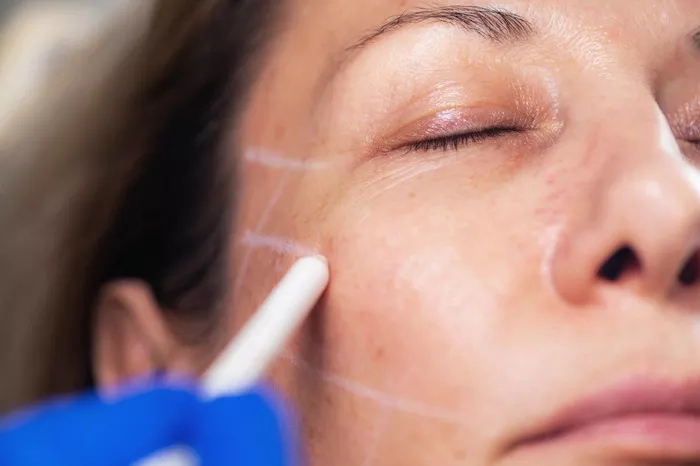A facelift, also known as rhytidectomy, is a surgical procedure designed to reduce the signs of aging in the face and neck. It can help tighten sagging skin, smooth out wrinkles, and restore a more youthful appearance. While a facelift can yield significant improvements, it is essential to understand that the recovery process involves some discomfort and restrictions. In this article, we will explore what activities are painful to do after undergoing a facelift.
1. Facial Expressions and Movements
After a facelift, patients commonly experience pain and discomfort with facial expressions and movements. The surgery involves tightening the underlying muscles and repositioning the skin, which can cause temporary tightness and soreness. As a result, movements such as smiling, laughing, or even talking may be painful during the initial stages of recovery. It is crucial to give your facial muscles time to heal and avoid excessive stretching or straining them.
2. Chewing and Eating
Chewing and eating may become uncomfortable following a facelift. Swelling and tenderness around the jaw area are common side effects of the surgery, making it difficult to open the mouth wide or apply pressure while chewing. To alleviate discomfort, it is recommended to stick to a soft diet for the first few days after the procedure. Opt for foods that require minimal chewing, such as soups, mashed potatoes, yogurt, and smoothies. Gradually introduce solid foods as your healing progresses, but be mindful of any pain or difficulty experienced.
3. Sleeping Position
Finding a comfortable sleeping position after a facelift can be challenging. It is crucial to keep your head elevated when lying down to minimize swelling and promote optimal blood flow. Sleeping on your back with several pillows supporting your head and neck is typically recommended during the early stages of recovery. Avoid sleeping on your side or stomach, as this can put unnecessary pressure on your face and disrupt the healing process.
4. Strenuous Physical Activities
Engaging in strenuous physical activities should be avoided for several weeks after a facelift. Activities that raise your heart rate, increase blood pressure, or involve intense movements can interfere with the healing process and potentially lead to complications. It is essential to give your body ample time to heal before resuming exercise or any physically demanding tasks. Your surgeon will provide specific guidelines based on your individual case, but generally, it is best to refrain from activities such as heavy lifting, running, aerobics, and vigorous sports during the initial recovery period.
5. Sun Exposure
Exposing your skin to the sun’s harmful rays can have adverse effects on the healing process after a facelift. Sunburn can cause increased swelling, redness, and discomfort, prolonging your recovery time. Furthermore, prolonged sun exposure can lead to hyperpigmentation and worsen scarring. It is crucial to protect your face from the sun by wearing a wide-brimmed hat and using a sunscreen with a high SPF. Follow your surgeon’s instructions regarding sun protection and avoid direct sunlight as much as possible during the early stages of healing.
6. Smoking and Alcohol Consumption
Smoking and alcohol consumption should be avoided both before and after a facelift. Smoking restricts blood flow, impairs healing, and increases the risk of complications such as infection. Similarly, alcohol can hinder the body’s healing process and may interact negatively with pain medications prescribed during recovery. It is advisable to quit smoking well in advance of the surgery and refrain from drinking alcohol for a few weeks following the procedure to optimize your healing and minimize discomfort.
7. Skincare Products and Makeup
After a facelift, your skin will be more sensitive and delicate than usual. As a result, it is essential to avoid using harsh skincare products and makeup during the initial recovery period. Fragrances, alcohol-based products, and abrasive exfoliators can irritate the skin and prolong healing time. Instead, opt for gentle cleansers, moisturizers, and sunscreen recommended by your surgeon or skincare professional. Once your surgeon gives you the green light, you can gradually reintroduce makeup, ensuring that you apply it gently and avoid excessive tugging or rubbing on the face.
8. Stress and Emotional Distress
Recovering from a facelift not only involves physical healing but also emotional well-being. Stress and emotional distress can hinder the healing process and increase discomfort. It is crucial to take time for self-care, engage in activities that help you relax and manage stress, and surround yourself with a support system that understands and encourages your recovery journey. Practicing mindfulness techniques, such as deep breathing or meditation, can also aid in reducing stress levels and promoting overall healing.
Conclusion
In conclusion, a facelift is a surgical procedure that requires a certain amount of recovery time. Pain and discomfort are common during the initial stages of healing. By following the post-operative instructions provided by your surgeon and taking necessary precautions, you can minimize pain and discomfort during the recovery period. Remember that each individual’s experience may vary, and it is essential to consult your surgeon for personalized advice. With patience, proper care, and adherence to guidelines, you can achieve optimal results from your facelift while minimizing post-operative pain.


